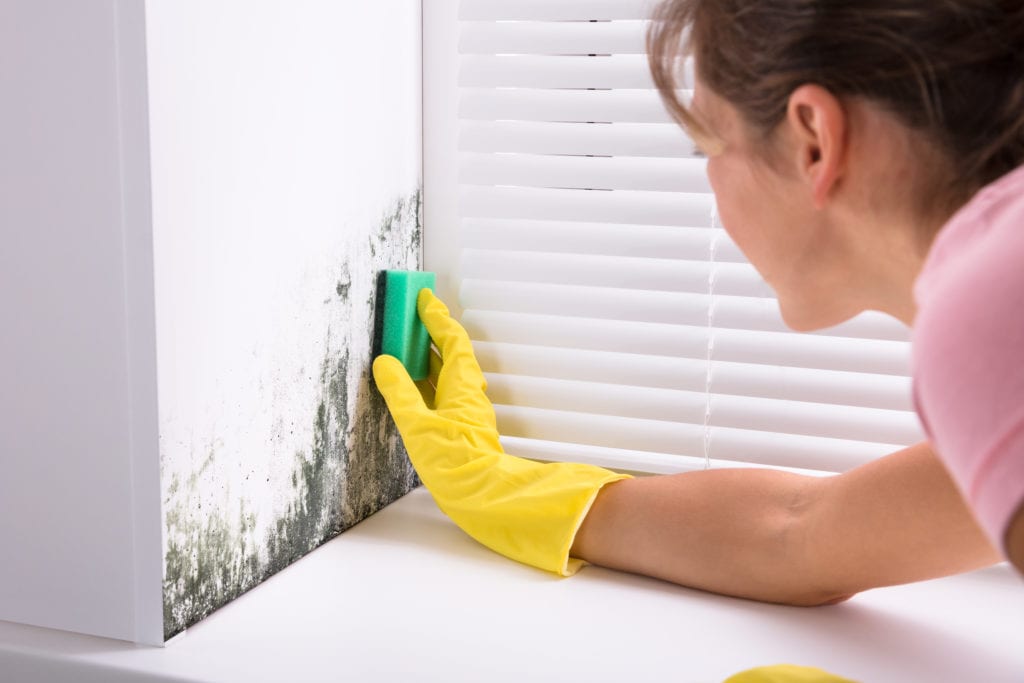Let it be clear. We do not endorse or recommend DIY mold remediation for all the good reasons. As a homeowner, you probably don’t have the knowledge and skills to get rid of mold. In addition, mold exposure can cause a series of health problems for you and your family. In short, mold is a problem that is best left to professionals. But we also understand that you might not have access to professionals when you want them to. What if you discover a mold during the holidays and need to take quick action? Knowing a few DIY mold remediation techniques can come in handy during such situations.
Using bleach for treating mold: One of the most popular DIY mold remediation techniques is using bleach. It is also one of the most dangerous and least effective ways to get rid of mold. Bleach only kills surface mold, not the roots. In addition, it can release harmful chemicals into the air that can be detrimental to your health.
Use vinegar instead: Vinegar is a much safer and more effective alternative to bleach. It can kill both surface mold and roots. Simply mix equal parts of water and vinegar in a spray bottle and spritz on the affected areas. Let it sit for an hour before wiping with a clean cloth.
Baking soda: Baking soda is another safe and effective DIY mold remediation technique. It works by absorbing moisture, which prevents mold from growing. Simply sprinkle baking soda on the affected area and let it sit for a few hours before vacuuming.
Hydrogen peroxide: Hydrogen peroxide is another safe and effective mold killer. Just like vinegar, it can kill both surface mold and roots. Simply mix equal parts of water and hydrogen peroxide in a spray bottle and spritz on the affected areas. Let it sit for 30 minutes before wiping with a clean cloth.
Citrus seed extracts and tea tree oil: Citrus seed extracts are natural mold killers. Simply mix equal parts of water and citrus seed extract in a spray bottle and spritz on the affected areas. Let it sit for 30 minutes before wiping with a clean cloth. Tea tree oil is another natural mold killer. Simply add a few drops of tea tree oil to a spray bottle filled with water and spritz on the affected areas. Let it sit for 30 minutes before wiping with a clean cloth.
These are just some DIY mold remediation techniques that you can use if you find yourself in a bind. Remember, mold is a serious problem that is best left to professionals. But if you must take action, these techniques can help you get rid of mold safely and effectively. If you are engaging in DIY mold remediation, ensure you have all the safety equipment. As a rule, make sure you have:
N-95 Mask: A N-95 mask can filter pores as small as 0.3 microns. And since mold spores are ten times that size, an N-95 mask will keep you protected from mold spores and prevent any possible respiratory problems.
Rubber gloves and safety glasses: Your hands and eyes are amongst the two most vulnerable areas to mold. Make sure you have solid rubber gloves and safety glasses to prevent accidents.

Drywall Saw: If you are dealing with drywall mold, it’s best to have a drywall saw by your side. A drywall saw helps speed up drywall removal.
Wet-dry shop vacuum: If you are dealing with mold following a flood or sewage backup, you will need a wet-dry shop vacuum. Consider renting it from your local hardware store if you don’t have one.
Heavy plastic sheeting: You can’t just move materials affected by mold from one place to another. You need to keep them at a distance from other materials and ensure that they are disposed of properly. A heavy plastic sheeting will come in handy while separating materials exposed to mold and help seal off any rooms that could spread mold.
Pump Sprayer: A pump sprayer will come in handy during mold remediation. If you are dealing with a massive region of mold, using a pump sprayer to water the area will reduce the amount of mold spores in the area.
Window fan: A window fan can help you expel mold-infested air from your house and into the open.
Cleaning supplies: You can’t hope to perform DIY mold remediation without gathering all cleaning supplies. Ensure you have all the right materials for the process and in the right quantities.
Sealant: You will need to seal the mold-infested areas following a mold remediation session. This is mostly done by a professional remediation company, but in case of DIY repairs, it is your job to apply the sealant. Just make sure you are using the right paint or sealing agent.
Mold can cause serious respiratory problems and other health issues. If you are not careful during DIY mold remediation sessions, you could end up inhaling mold spores and causing serious health problems. Make sure you have all the safety equipment before starting any mold remediation. If you run into any issues, the best solution is to leave whatever you are doing and contact a professional.






